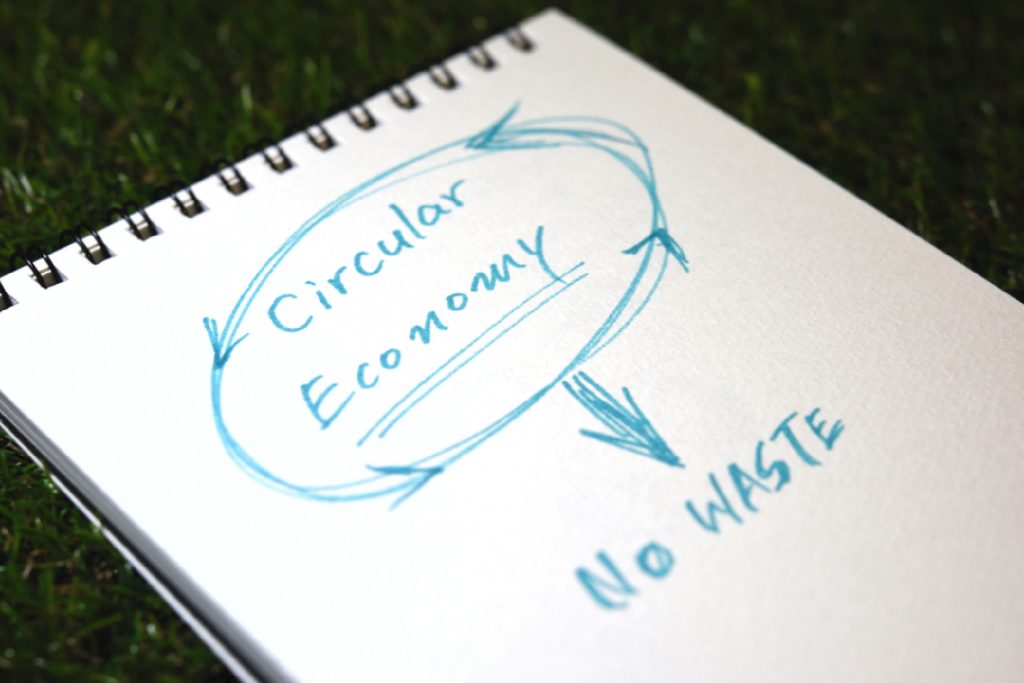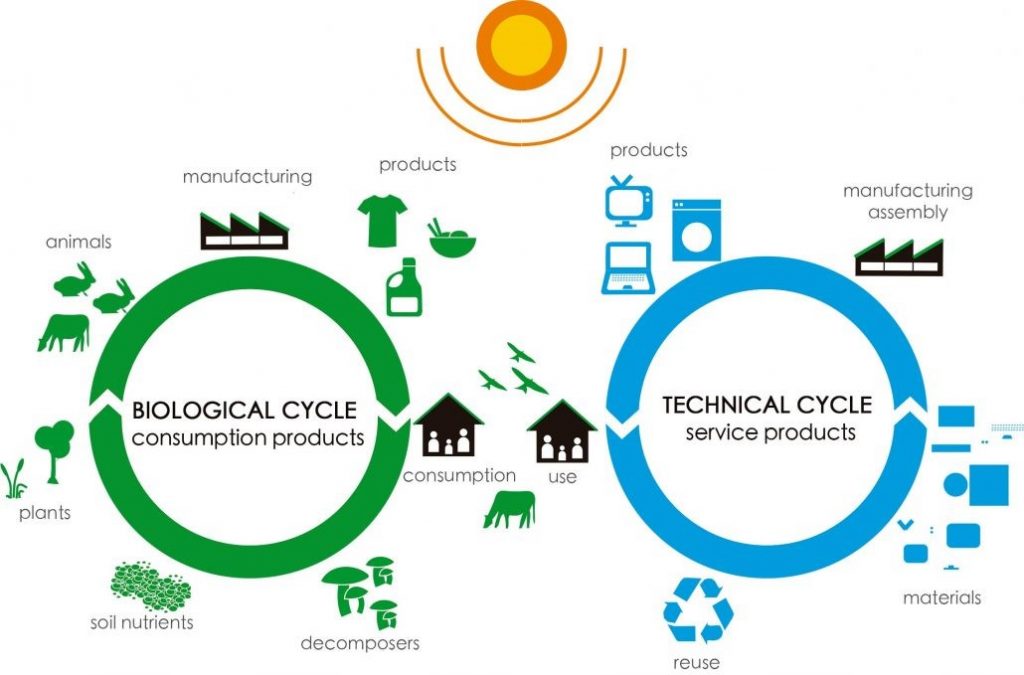The circular economy is a revolutionary approach to the way we consume and dispose of products. Discover how it works and why it matters.
In a brave new world of sustainability, the circular economy is a concept that has developed over decades to become a viable alternative to our existing, wasteful systems of unchecked consumption. It is gradually making its way into the mainstream and requires little in the way of sacrifice for consumers or industry. This system would pioneer a long-lasting design, maintenance, repair, reuse, remanufacturing, refurbishing, and recycling.
![]()
It is, simply, a different way of thinking about the way we produce and consume. As the world becomes increasingly aware of humanity’s impact on our planet, it is clear that a new type of system is required—not only to address the finite nature of non-renewable resources, but also to deal with the extensive amounts of waste we create. At its core, this is what the circular economy concept aims to achieve, with a broad scope that can easily be applied to multiple industries.
But what is the circular economy exactly? And why does it matter? Here, we take a look at the history and development of the concept and how it is beginning to push its way into the mainstream.
![]()
A Brief History of The Circular Economy
![]()
The concept of a circular economy is not particularly new nor can it be easily attributed to a single thinker or theoretical approach. The ideas laid out in Kenneth Boulding’s 1966 essay, The Economics of the Coming Spaceship Earth, are often cited as the earliest, tentative steps towards what has now become a fully developed framework for an economy that attempts to restore and regenerate rather than dispose. From these humble beginnings, a range of seemingly disparate concepts that shared similar objectives began to converge.
Those ideas include cradle-to-cradle thinking combined with the laws of ecology, biomimicry with notions of a performance economy and regenerative design with closed-loop systems.
However, it wasn’t until a 2012 report from the Ellen Macarthur Foundation entitled Towards the Circular Economy: Economic and business rationale for an accelerated transition that the economic and business opportunities were pragmatically considered. In part, it is thanks to this report that the circular economy is now considered a necessary and economically viable alternative to the current system for all types of industries and businesses.
In 2018, the Platform for Accelerating the Circular Economy (PACE) was launched, bringing together the World Economic Forum, World Resources Institute, Philips, Ellen MacArthur Foundation, United Nations Environment Programme, and 40 further partners to push forward the circular economy agenda. Today, PACE is responsible for a number of international projects that are designed to accelerate the transition to a circular economy.
![]()
Defining the Circular Economy
All of these ideas, concepts, essays, reports, and platforms would eventually lead to a simple conclusion. In order for the world to manage dwindling natural resources and deal with our ever-growing volume of waste, we must move away from traditional linear concepts of take, make, dispose and embrace closed loops that place value on all resources used. To put it simply, our “disposable culture” must be altered. Only by keeping products, packaging and ultimately, resources in circulation for as long as possible can we hope to address the problems presented by our existing economies.
Comparing the definition of a circular economy against the existing linear model is probably best achieved through the use of these diagrams.
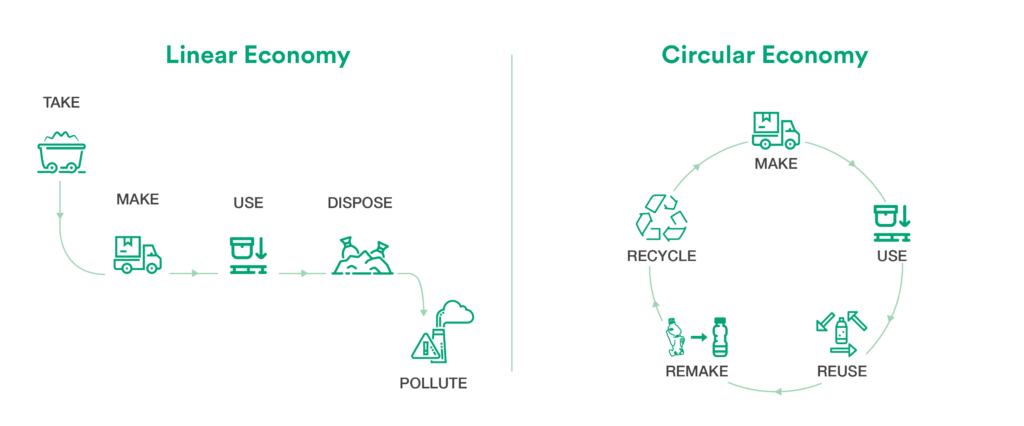
![]()
Why Does the Circular Economy Matter?
The principles of a circular economy are, as previously mentioned, the reduction of our reliance on non-renewable resources and the minimization of waste. However, its aims today go much further than this, and its scope now covers a variety of other principles that have come to be considered part of a true circular economy.
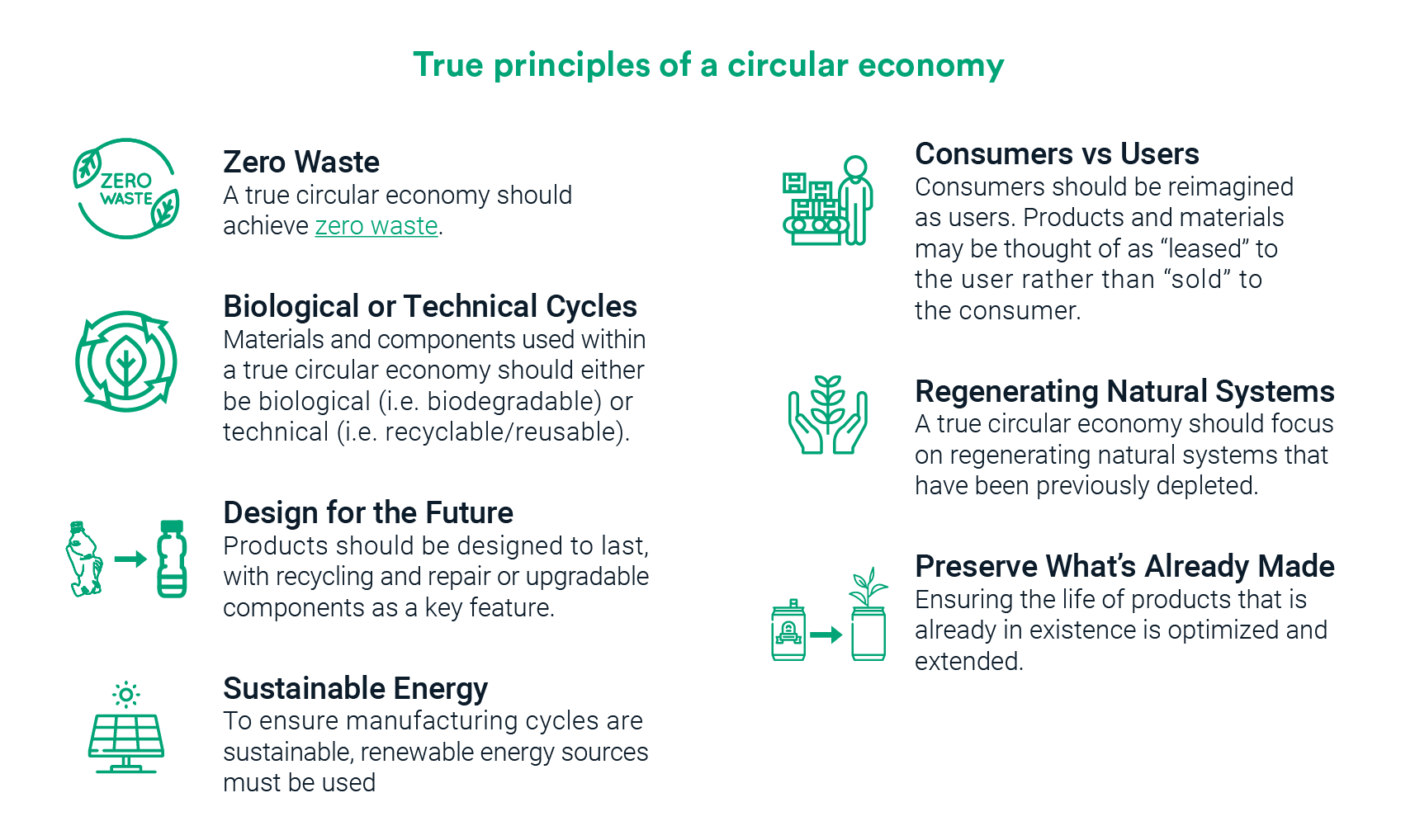
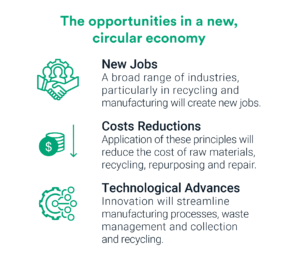
While much of the circular economy’s theoretical core has been agreed upon, there exists a number of schools of thought on how these principles are developing and will expand.
However, an underlying truth common to all approaches is the idea that, rather than being a burden, the circular economy must be considered an economic and social opportunity.
![]()
How Does the Circular Economy Work?
Naturally, these progressive changes to our manufacturing will affect different types of products in different ways. However, the concepts of the biological cycle and the technical cycle are illustrated in this circular economy diagram:
In the biological cycle, raw materials are ethically and sustainably sourced from the earth, plants, and animals. Products are then used before any “waste” is decomposed and returned to the earth as compost.
In the technical cycle, raw materials are refined or manufactured to ensure longevity and ease of recycling. Products are then used before the materials are recycled or individual components are reclaimed and reused.
In both cases, the energy used in manufacturing comes from renewable sources such as solar power. In some cases, products may fall under both the biological cycle and the technical cycle. For example, plastic bottles made from biodegradable plastic materials should be designed to be refilled many times before finally making their way to the decomposition stage.
To learn more about how your business can begin to implement effective waste management practices designed to increase recycling and composting, read RTS’s Guide to Waste Management or contact a member of our team for more information on the services in your area.

